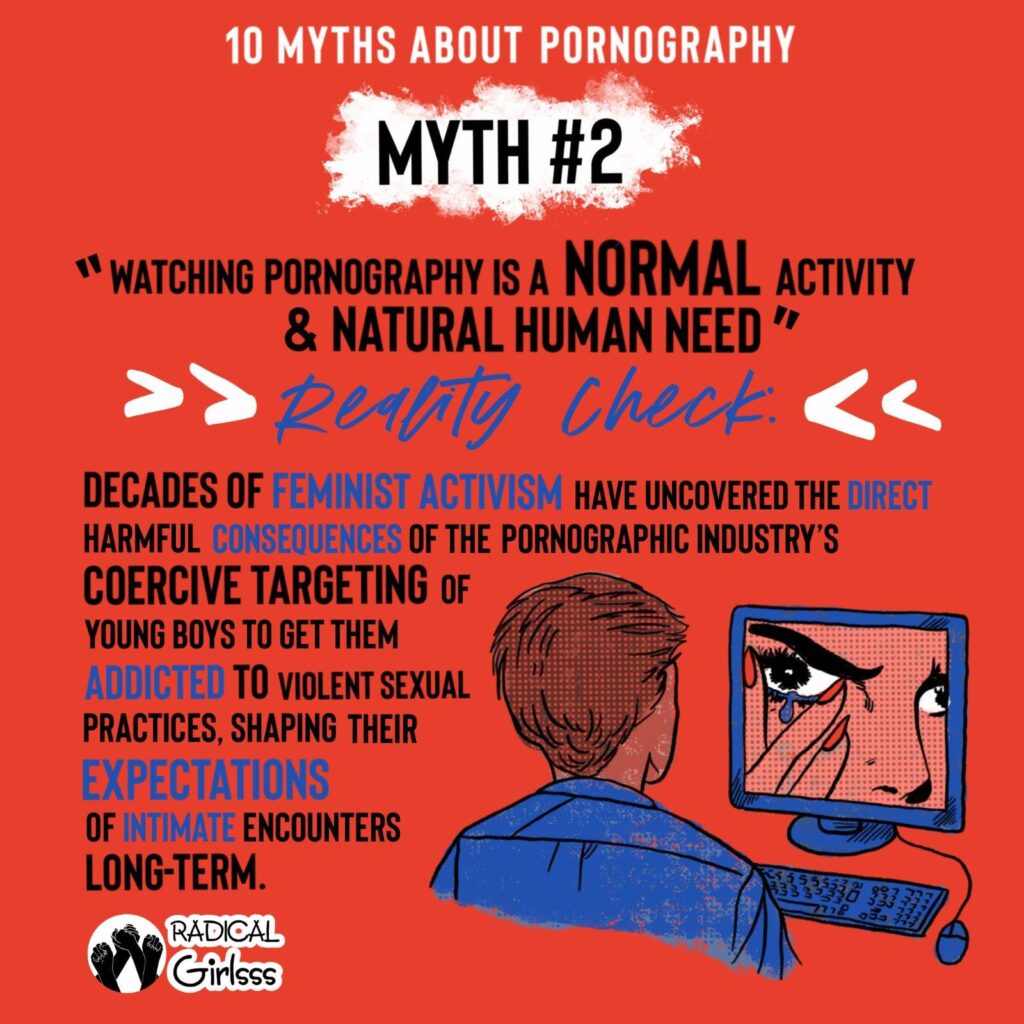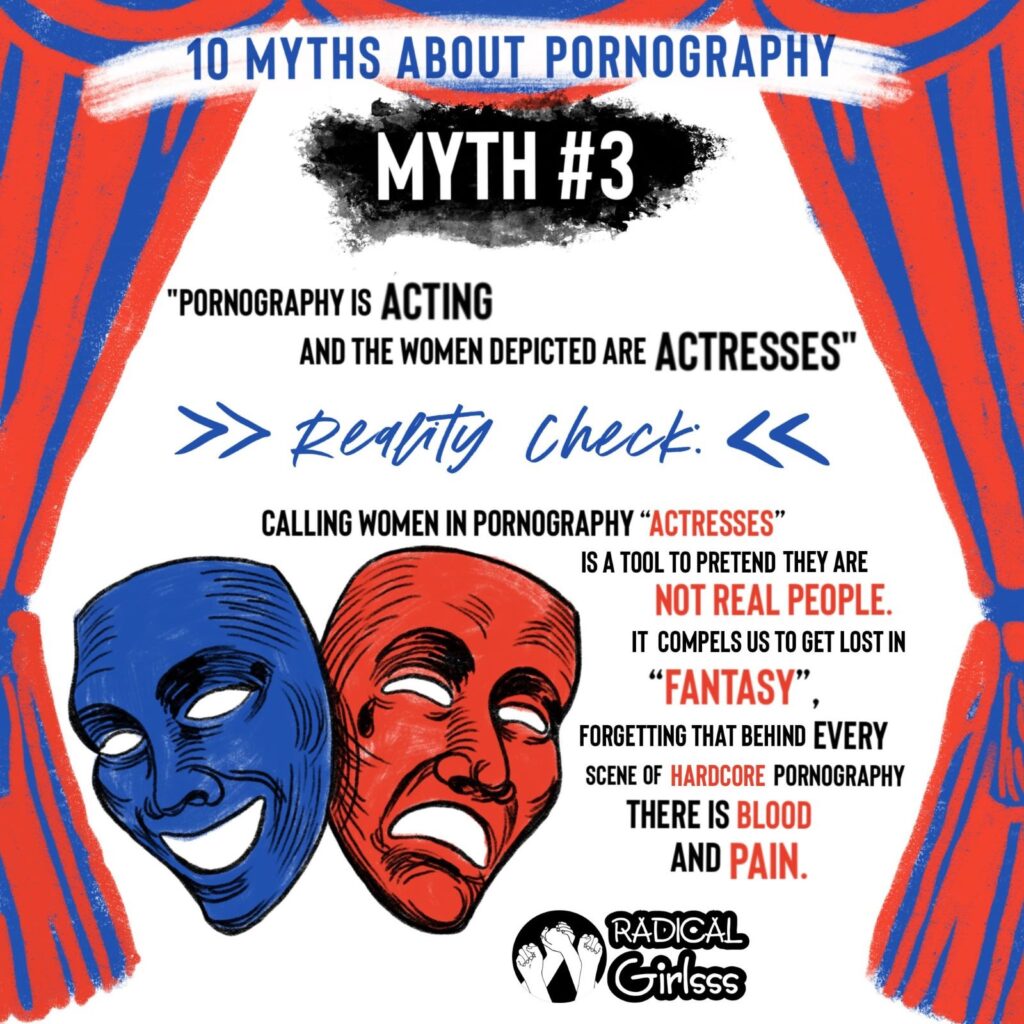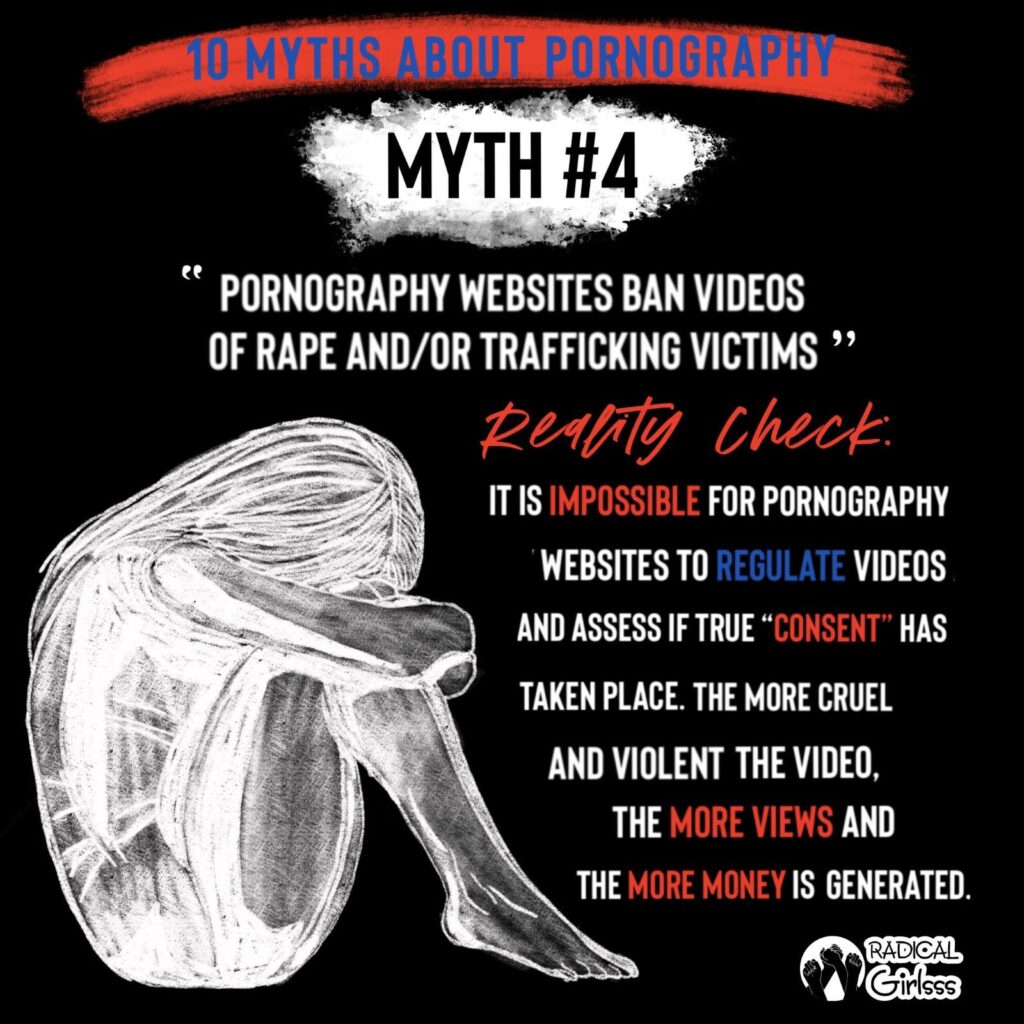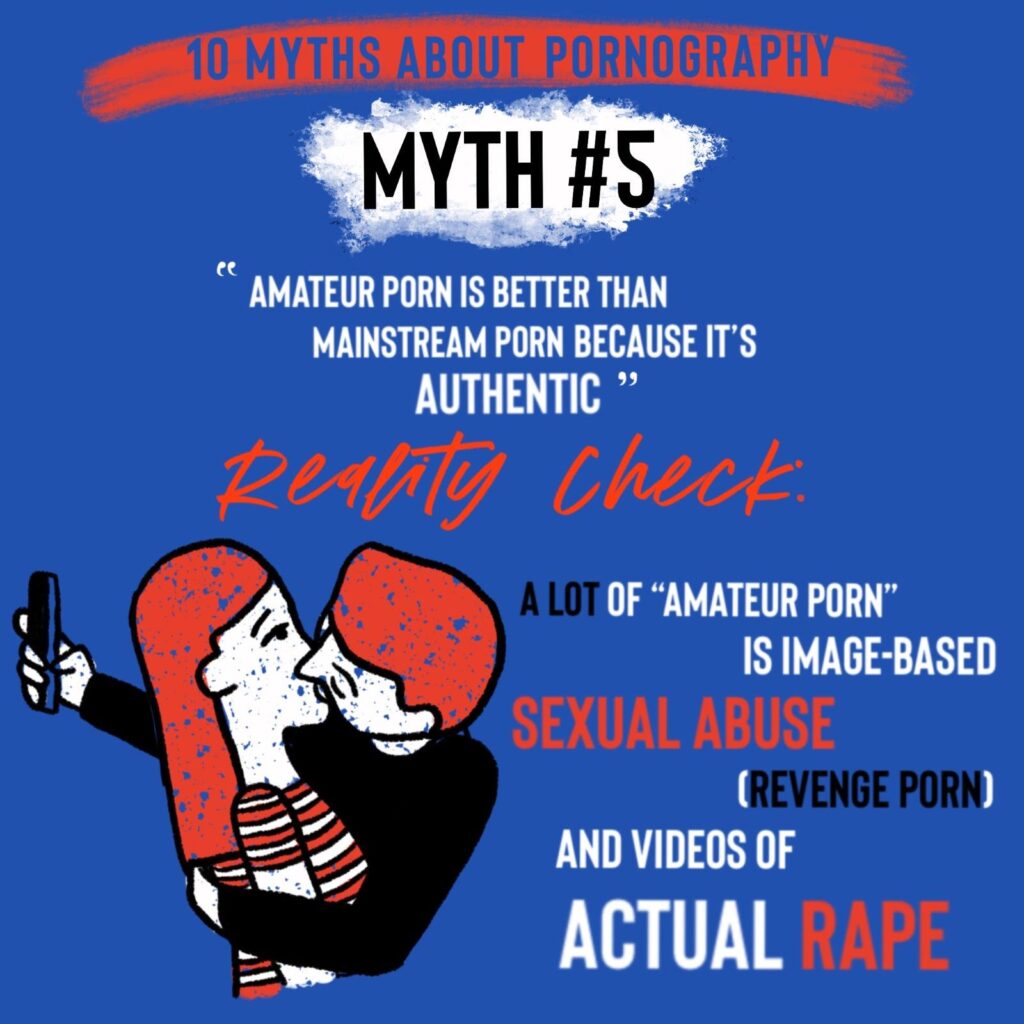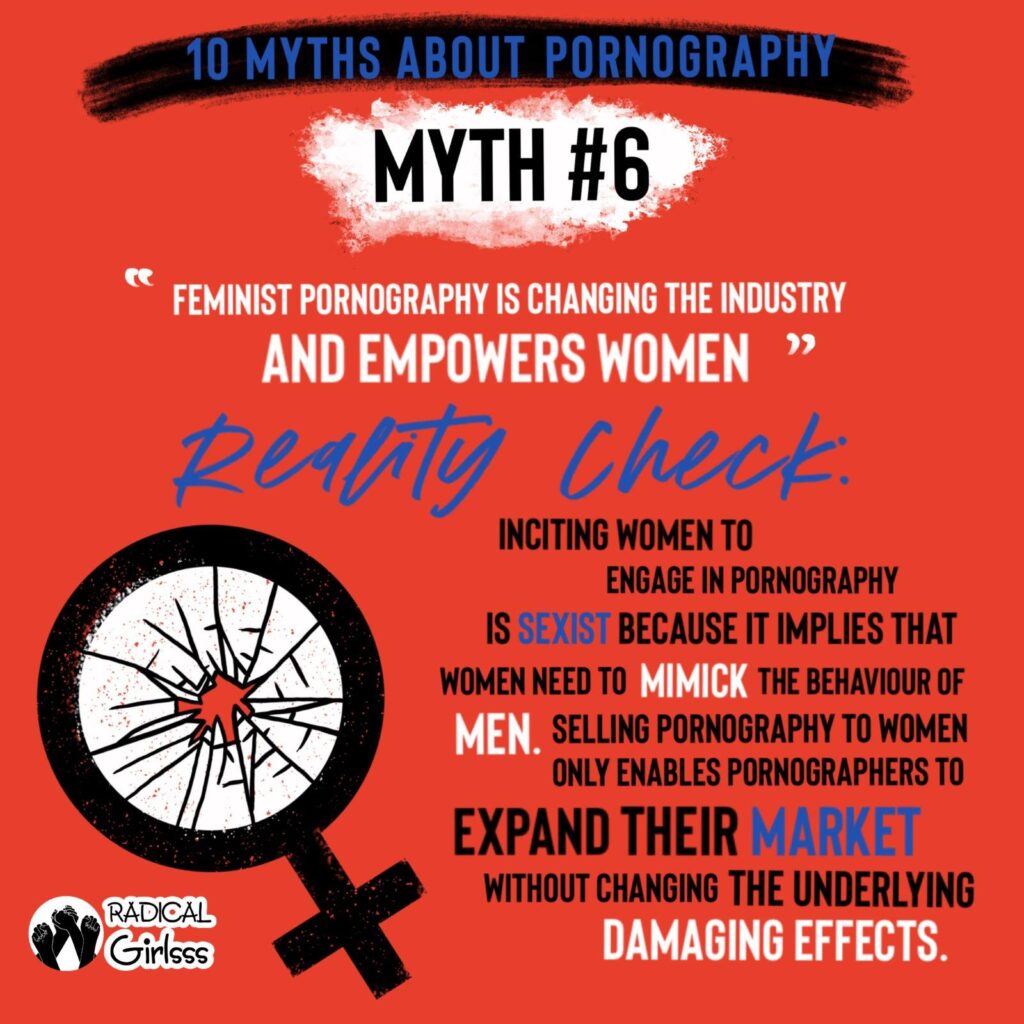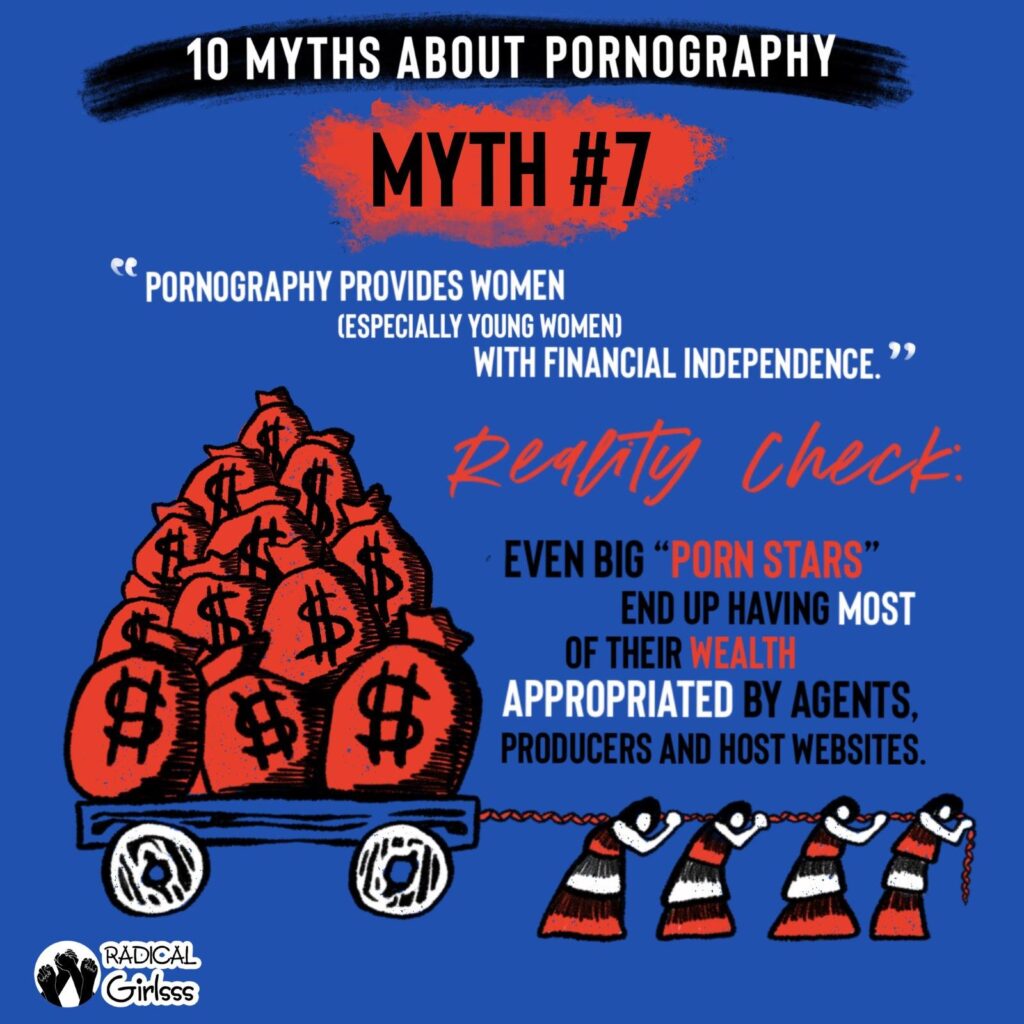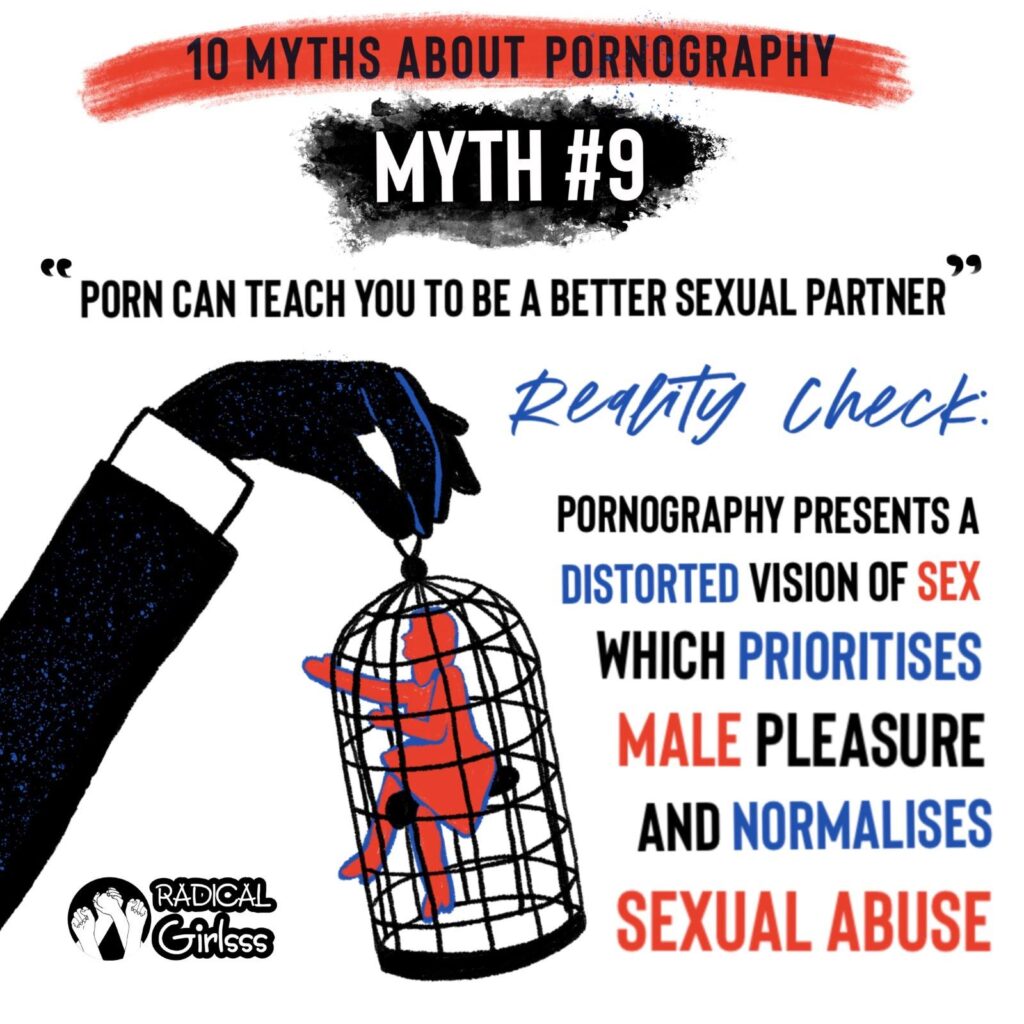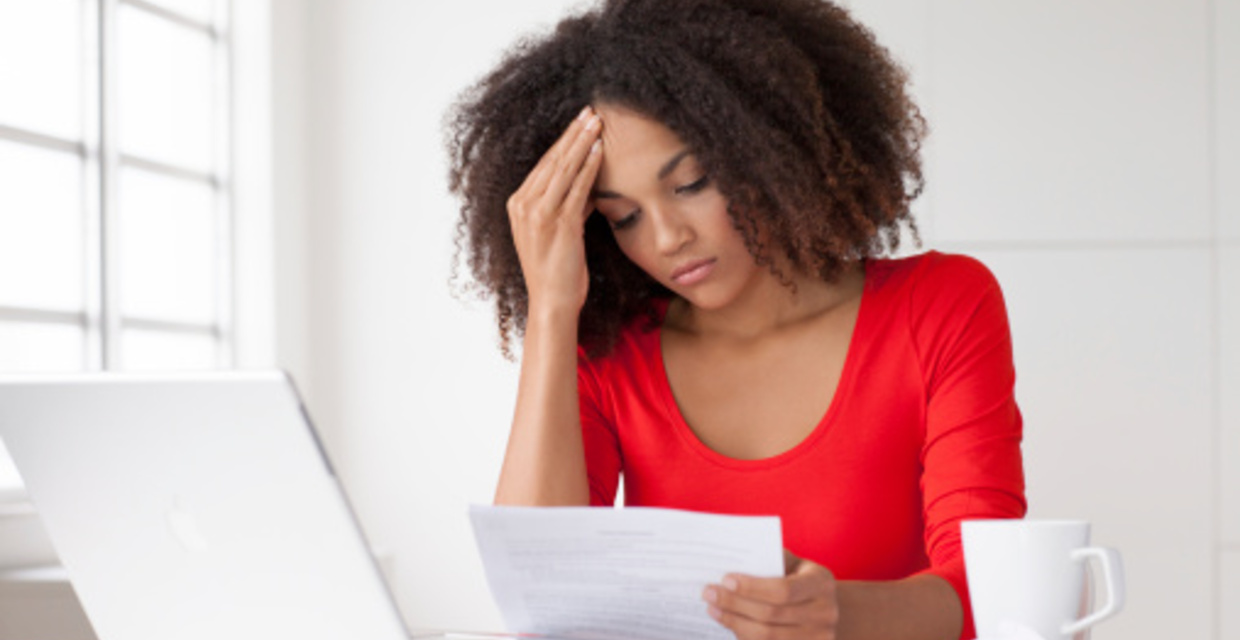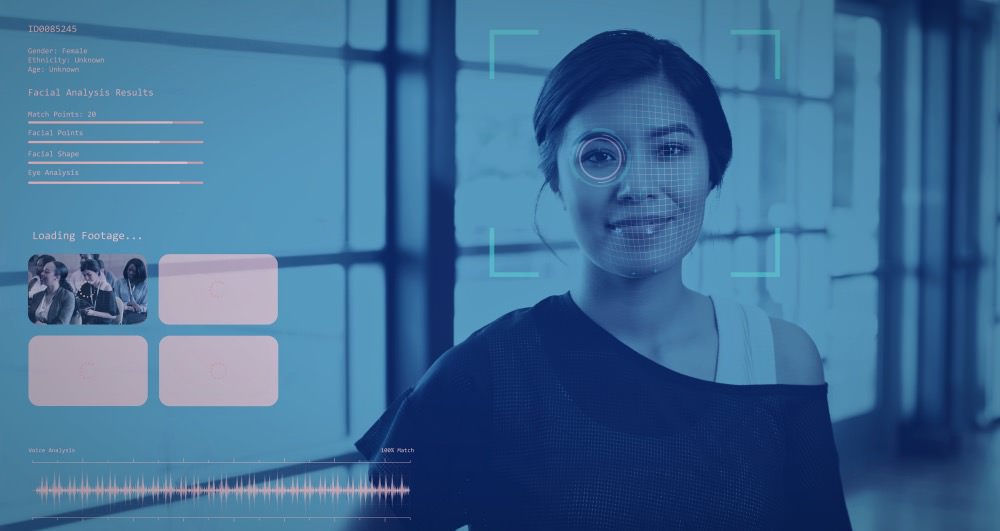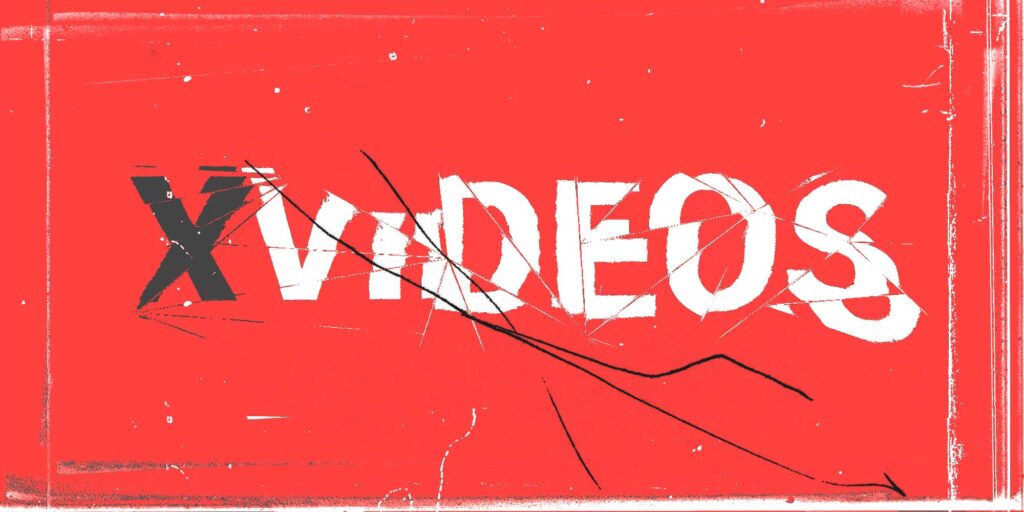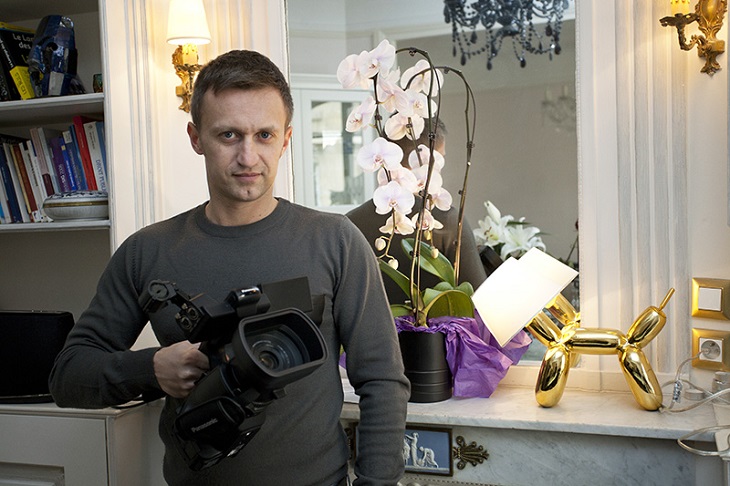BY NMN

This is an edited transcript of the second part of Suzzan Blac’s talk at the ‘An evening with Suzzan Blac’ webinar we held in July 2021 and the subsequent discussion with Ygerne Price-Davies. The transcript of the first part of the talk, which was about her extraordinary paintings, is in a separate article. You can watch the recording of the whole talk on YouTube.
Of all the harms done to girls and women, pornography is the most damaging and far-reaching, affecting not just the victims within the porn industry, but also women and girls outside of it.
I first saw pornography when I was six years old. It was shown to me by one of my mother’s boyfriends as he sexually abused me. Throughout my childhood and teenage years, every older boy and man who sexually abused and raped me had pornography. And that’s not forgetting the sex traffickers who forced me into pornography. [Editor: Suzzan talks about this in the first part of her talk.]
So, I knew that there was a connection between sex offending and pornography. Over the years, and in my obsession with perpetrators and why and how they could so easily abuse and hurt girls and women, I researched sex offending, rapes, kidnapping, torture and sexually motivated murders and noticed that high pornography use was a significant and prime factor in their offending. I began writing about this in my blog, The Violence of Pornography, in 2016, documenting such cases.
I also read about research on the aggression in pornography. Whenever I posted about this on social media, however, I would be attacked by men. Some would laugh and say ‘You’ve never seen any pornography’. Well, yes that was true, I hadn’t seen any pornography – at least not since I was trafficked into it in 1977. I knew I would be traumatised if I accidently came across any.
So, in 2017 I decided that I had to watch it. How could I speak out against porn if I had never seen any recently? I chose Pornhub, because it was the most popular mainstream porn-site, having 115 million hits a day. I watched and took screen-shots of hundreds of videos on it.
Like many women who don’t watch porn, I had no idea about it’s true content. You just assume that much of it is ‘adults having consensual sex’ with maybe a bit of hair pulling and slapping going on. How wrong I was!
Crime scene videos
I could not believe what I was seeing, I thought that these things could only be seen on the dark web. I watched women being sexually and violently abused, humiliated, degraded, raped and tortured.
These were not sex videos. They were crime-scene videos.
There were women being raped when they used their safe words in ‘kink’ videos and when they were sleeping or passed out from alcohol or high on drugs. There were drug addicted prostitutes unaware that they were being filmed. Women being suffocated with plastic bags, water-boarded, strangled manually or with ligatures. Women being really hanged with ropes.
Many are ‘professional videos’, but a significant amount of user-generated content is uploaded onto Pornhub, often with no consent from the women appearing in it.
I watched one man film a woman standing on a chair with her neck in a noose. He would kick the chair, let her hang for a few seconds, then pick her up, place her back on the chair and do it again. And again. And again.
I watched a tied-up naked female being shot continuously for fifteen minutes by a man with an automatic BB rifle. I watched women’s breasts being tortured with needles, cigarettes being stubbed out on their nipples, and breasts already heavily bruised being punched or stood on by men in heavy boots. I watched women having their genitalia whipped with nettles or being sharp whipped, causing deep lacerations, some were ‘live streamed’ with requests from paying males.
Many of these videos have millions of views and endless derogatory comments along the lines of, ‘Loving the torture and seeing women suffer’.
There were tons of ‘domestic violence’ videos, mostly home-made by men who abuse their wives and girlfriends, filmed on their mobiles.
I frequently came across child sexual abuse imagery, some of real children and also CGI child abuse. I only saw these as thumbnails. I never clicked on the videos. Obviously, I couldn’t research this. I reported it to the Internet Watch Foundation, but never heard back.
There is also a lot of extremely disturbing and realistic CGI bestiality videos.
There were a significant number of men sexually offending outside the home, filming their offences with mobile phones and uploading them onto Pornhub. Offences ranged from up-skirting, secret toilet filming, indecent exposure, to masturbating and ejaculating onto unsuspecting females.
There is an incredible amount of criminal activity on Pornhub and I have evidenced much of it in my blog in the form of screen-shots for all to see.
Pornhub is completely unregulated and violates its own uploading terms. I am happy to say at least they are now being held accountable and have many lawsuits against them.
And, there are so many views. You can’t actually ascertain how many views a video has, because one video might have two million views and is then uploaded with a different title that has 600,000 views, and then another, and so on.
Strangulation (aka ‘breath play’)
I’d also like to talk about how common strangulation is on Pornhub. The kink community have changed the language, so it’s no longer called strangulation. They now call it ‘breath play’, which can mean suffocation or strangulation or hanging or choking. Quite often they call it choking when it’s not actually choking.
Choking is the act of having something stuck in the oesophagus. Strangulation is completely different. It can be done manually or with ligatures or with their arms or legs. It’s extremely dangerous because even for a few seconds it can cause a lot of health issues including brain damage – and that is if it’s non-fatal. It really is extremely dangerous. There are thousands of videos of men strangling women until they lose consciousness, either suffocating them, putting things in their mouth, suffocating them with plastic bags and strangling them or hanging, and I mean really hanging, them.
Rape, donkey punch, incest…
There are other disturbing videos like of rape but they don’t call it rape anymore. You can’t type in the word rape. Pornhub removed that term, but other words that mean the same thing are there – for example, unwilling sex or surprise anal.
There’s hate fuck, and donkey punch where men kick and hurt women and then punch them in the back of the head as hard as they can. I’ve seen women’s vaginas being stapled shut. Electric torture, punch fisting. Women being pissed on, either in their mouths or in their vaginas or anuses and they have women licking toilet bowls. Or, their heads being flushed down the toilet while they’re being pummelled from behind.
The most humiliating and degrading stuff.
There are also tons of incest videos with titles such as ‘No Daddy Stop’ or ‘I’m Not Mommy’. They dress 18-year-old girls to make them look like little girls and put them in child-themed rooms with much older men or sometimes elderly men, like it’s a granddad abusing his granddaughter. There’s a lot of incest, an awful lot of incest, brothers and sisters and so forth.
There are also horrible channels called sexually broken where they destroy women in every way possible.
Normalising and eroticising sexual violence against women and girls
I have documented all these types of videos on my website, The Violence Pornography. I have blurred the genitalia and it is very distressing to see, but I put it out there because I think people, especially women, need to see what it’s like without having to watch it themselves.
My research makes it absolutely clear that pornography normalises and eroticises sexual violence against women and reinforces rape myths. It is common for the girls and women who are being abused in these ways to be portrayed as if they are loving it. As if they’re not really saying no. It is made to look as if they say yes because they’re worthless whores and they love it.
This is extremely dangerous – especially knowing that young boys are watching this kind of content.
I believe that pornography should be deemed hate speech and that it is a violation of Article 3 of the Human Rights Act: the right not to be tortured in an inhumane or degrading way.
I could talk a lot more about pornography but most of it, as I said, is on my website.
Gay men’s porn
Ygerne: I just wanted to say thank you so much, Suzzan, for such a powerful and moving talk. And now if it’s OK with you, I’d like to ask about gay men’s porn. Did you research that and what did you find?
Suzzan: Every time you speak out on social media there are people who love to derail you and that’s one of the many things that was said to me. Gay porn! And I realised that I hadn’t actually watched any gay porn. So it was clear I was going to have to. Believe me, I didn’t want to do it, I really didn’t want to, but it was the only way to get answers.
So, one night I sat down with a big glass of wine and I went to Pornhub’s gay porn channels and typed in the same search words that I had for the women – such as rough sex, unwilling sex, torture, strangulation, everything. And I prepared myself…
At first I was confused because when I started watching the videos, they were lovely, absolutely lovely. The men were kissing. I had never seen any kissing on the straight porn channels.
They were also hugging and caressing each other. They were talking to each other; they were wearing condoms; they were respectful.
I thought I’d probably get to the other stuff later. So, I kept watching. I kept typing in the same search terms. There was one that came up under “rough sex”, and it was this huge hairy guy in leather. He was with another guy, a young guy, who was strapped to a cross and I thought, here we go. So, he gets a whip – but it’s a cat-o’-nine tails that has thick, wide pieces of soft leather – and he flogs him very gently so he doesn’t hardly even turn pink. And then he kisses him.
And I’m like, what? So, I type in torture and most of what I see is being tortured with feathers and tickling. Tickling torture! And it was like that in so many videos.
And I realised that this is the polar opposite of how the women are treated in pornography. There was no hate. There was no degradation; no humiliation; no cruelty; no sadism; no pain; nothing.
So then I did the same thing with trans porn. And again, I watched hundreds of videos and took screenshots and it was like the gay porn: caressing, kissing, and respect.
I looked at casting couch porn. You’ve probably heard of that. In the straight porn, it’s nasty: right from the beginning they start calling her names, humiliating and degrading her, and then some guy comes in and literally throws her about the room and pummels her. In the gay men’s porn, he’s asked some questions and then they start kissing and have normal sex.
The difference was astounding, really astounding and I thought that just proves the misogyny on that platform. It is virulent, it is horrific, and I’m glad I’ve documented it because now a lot of it has been taken down, as you know.
Pornhub has a lot of lawsuits against it as we speak and it took down millions of videos. Eighty percent of its unverified videos were taken down. So, that is some good news. We’ll see what happens next.
Wider implications
Ygerne: I saw that the house of Pornhub’s owner was attacked by an arsonist and burned down.
Suzzan: Yes, I saw that too. In the research I did years ago, I found him. I found that MindGeek owns Pornhub and so many other sites. I found a photo of him and put it on Twitter. Of course, nobody took much notice at the time. It wasn’t until, and I’m glad to say this, a male reporter at The New York Times took this story up, that anything actually happened and then Visa and Mastercard and other companies stopped dealing with Pornhub. So, I’m glad of it.
Ygerne: That’s why the work you are doing documenting it is so important.
Suzzan: I think it is important. Without seeing the images, it’s hard to believe. Images are really important to me – as you can see in my paintings. It’s not that people don’t believe exactly, it’s just that if you’re reading text, you’re detached from the reality. But, when you see images… It’s like, no one believed that the holocaust could happen – no one – until they saw the images and videos of what was going on over there.
It’s the same with everything. That’s the reason I took screenshots because I didn’t believe it. I’d read about it, but I didn’t understand the extent of it and how it’s worse than awful. The misogyny is truly horrifying.
As I said, it’s not about adults having consensual sex – as many people claim. They say that it’s consensual and if a woman likes a bit of rough, it’s her choice. But that’s not what it’s actually like.
And of course, a lot of the videos out there are not professionally made. There are millions of mobile phone videos – taken by men – boyfriends, husbands. I documented that too. It is domestic abuse – but it’s not only that because you’ve got men who are abusers, who are not just filming their wives and girlfriends and putting it on Pornhub, they’re also doing live cams and making money from it.
They’re actually making money out of their wives and girlfriends who are not consenting. And that says a lot about consent in pornography. No one can really tell if the person in pornography is consenting or not. Because you can’t tell if they’re a trafficking victim; you can’t tell if they’re a domestic abuse victim; whether it’s secret filming; whether it’s a minor. Simply no one can tell.
Facebook and YouTube have something like 20,000 to 30,000 moderators working on their sites to get rid of illegal content. Do you know how many Pornhub have? And we’re talking millions and millions of videos, I can’t remember the exact number, but millions. They had 20 or 30 moderators!
That’s a joke, isn’t it? I think they said a moderator can look through about 150 videos an hour. They literally fast forward through them. But they aren’t all in English. There’re a lot of foreign videos there, from all over the world. So, often they wouldn’t even know what the title said or what anybody said.
But, 150 videos an hour, how can anyone moderate that? It’s impossible. But, you know, it’s coming to a head now and people are finally understanding what Pornhub’s about and it’s about time.
Ygerne: The comparison you made with YouTube… It’s like when it comes to porn, the attitude is it’s just a bit of fun, and any criticism of it is deemed to be prudish.
Suzzan: Well, it’s free speech, isn’t it? [Laughs.] It’s free speech, but not for the women who are performing in these videos, or not performing, or don’t even know they’re in the videos.
And as I said, there is so much violence on there. It’s not sex! I’ve been called all sorts of names as you can imagine.
You know, we all like sex. But most pornography is not about sex anymore. It’s now about the humiliation, degradation and suffering of women. They love to punish women and there are millions of these videos, with millions of views, and men who are enjoying them.
What is that doing? What is that doing to young boys? What is that doing to their minds when they see that and they’re looking at it everywhere, including in school?
It’s awful and I think they should ban mobile phones in schools because even my own daughter, years ago when she was a teenager, was traumatised. She didn’t tell me at the time, but she was traumatised by boys showing her violent pornography. And it’s still going on and they’re getting younger and younger; we’re talking 10, 11, 12.
We must put the onus on the perpetrators
Ygerne: I remember getting shown porn when I was in primary school.
So now a question from the audience. What would you advise us to use in terms of language in the sense of putting the onus on the perpetrators? Would you use the word prostitutor to define this person?
Suzzan: Yeah, the problem has always been seen in terms of the victim and the perpetrators are hardly mentioned and that needs to change. The onus really needs to be on the perpetrators. We need to ask why they are doing this and make them accountable. Definitely more needs to be done about that.
Even with victims of murder, women who were murdered, the emphasis is always on her: she was drunk, what she was doing? Why was she out on her own? Why was she wearing headphones, why this, why that? But, not the perpetrator. And why is that?
It has to do with misogyny and, and victim blaming. Because it is women too who are doing this. Women can also be misogynistic. I’ve known that first-hand. Yes, it needs to be changed and we all need to collectively keep fighting for these things.
Ygerne: Misogyny is so engrained in all of us, isn’t it.
Suzzan: Yes. And with domestic abusers, it’s always been why doesn’t she do this, why doesn’t she do that. I’ve experienced it. My sister and my mother have experienced it.
Even though you’re married to that person or live with them, they can still terrorise you and no one understands that, unless they’ve been in that situation. Just because you live with that man, it doesn’t mean it will calm down and be okay.
I have been in that situation and my sister has too. The worst time is when you leave them. That’s when he would threaten. He’s broken her bones. He’s kicked her when she was pregnant.
When I was young and this was going on, she was only 17, 18, I was so used to violence it didn’t affect me, it was normal. In the end, when she would threaten to leave, he would say he was going to kill her and the children. When finally she did leave, he followed her and beat her up in a spa shop, and kicked the hell out of her. Nobody, not one person, said anything. Nobody did anything. They just watched or walked out.
When she fled to a women’s refuge, he came and found her and was swearing and throwing stones at the windows. Then they put her in a caravan with her four children. The terror that she went through hasn’t left her. She’s still not right from it now.
This is what people don’t understand. This is why we must concentrate and focus on these perpetrators.
Impact of watching porn
Ygerne: Thank you so much. We’ve got loads of positive comments coming in from the audience. Gratitude to you for your honesty and resilience.
Suzzan: Thank you. You’re so kind. I appreciate that. It’s worth the hard work.
It has been traumatising work, especially the pornography. For a year I’ve had to take a break because just watching it traumatised me and I was having other effects. For example, I would go to the shops or the post office and I would see different women, I would look at different women, young women, elderly women, all kinds of women and think about what genre they would be in. Every time.
If it’s done that to me, and, believe me I’m not masturbating to this material, I’m analysing crime scenes, because that’s what they are, what is it doing to young men in particular, who are masturbating to this kind of material? And then they’re out in the real world looking at women in the real world, what is it doing to them?
Ygerne: It’s terrifying.
Suzzan: It is and there’s so much to talk about.
I’ve researched serial killers and sexually motivated murders because most serial killers kill women. You can see the rise in serial killers, especially in America, since the early 70s, 80s, and 90s which coincided with the increase in violent pornography. You can see, it’s almost like an exact match.
And their prime motivation is fantasy. Sex offenders say that it’s all about the fantasy. Whatever they do, whether they look through a woman’s bedroom window or expose themselves or want to kidnap and rape and murder a woman, it’s all about the fantasy and this escalation.
What happens is, they start watching what they like to call vanilla porn, although there’s not much of that around anymore, I can tell you, except in gay porn. If you don’t want to see violence then watch gay porn.
They start with the vanilla and go on to harder and harder stuff, and then bestiality. And once they’ve covered everything, they can no longer become aroused and that is when they cross the line into real offending. And might actually film it and import it onto Pornhub.
I can’t tell you how dangerous it is and how many rapes there are a year and sexual assaults – but I bet you money they are rising and have been rising since pornography became so available on the internet.
Ygerne: We’ve run out of time now – so I just want to say, if anyone wants to find out more about Suzzan’s research, you can find it on her website, The Violence Pornography. If there are any parents that have been affected by topics we’ve talked about, we provide some links to some good resources below. Thank you for participating and all your questions.
And thank you, Suzzan, for passing on your wisdom. Good night, everyone, and thank you.

For the first part of Suzzan’s talk, which is about her life and extraordinary paintings, see: Suzzan Blac discusses her life, trauma, and extraordinary art.
Her book, ‘The Rebirth of Suzzan Blac’, is available on Amazon.
Een reactie plaatsen
